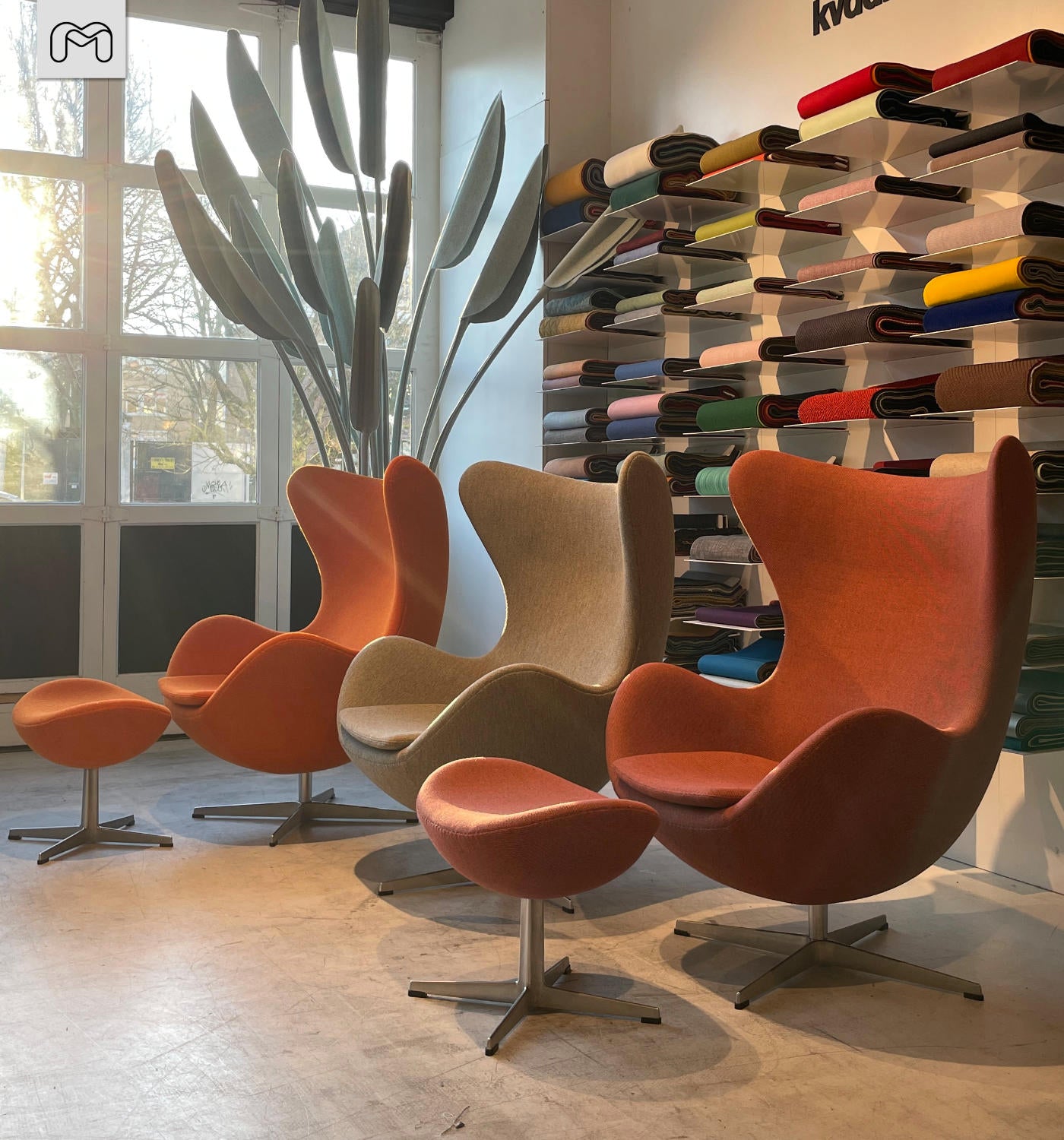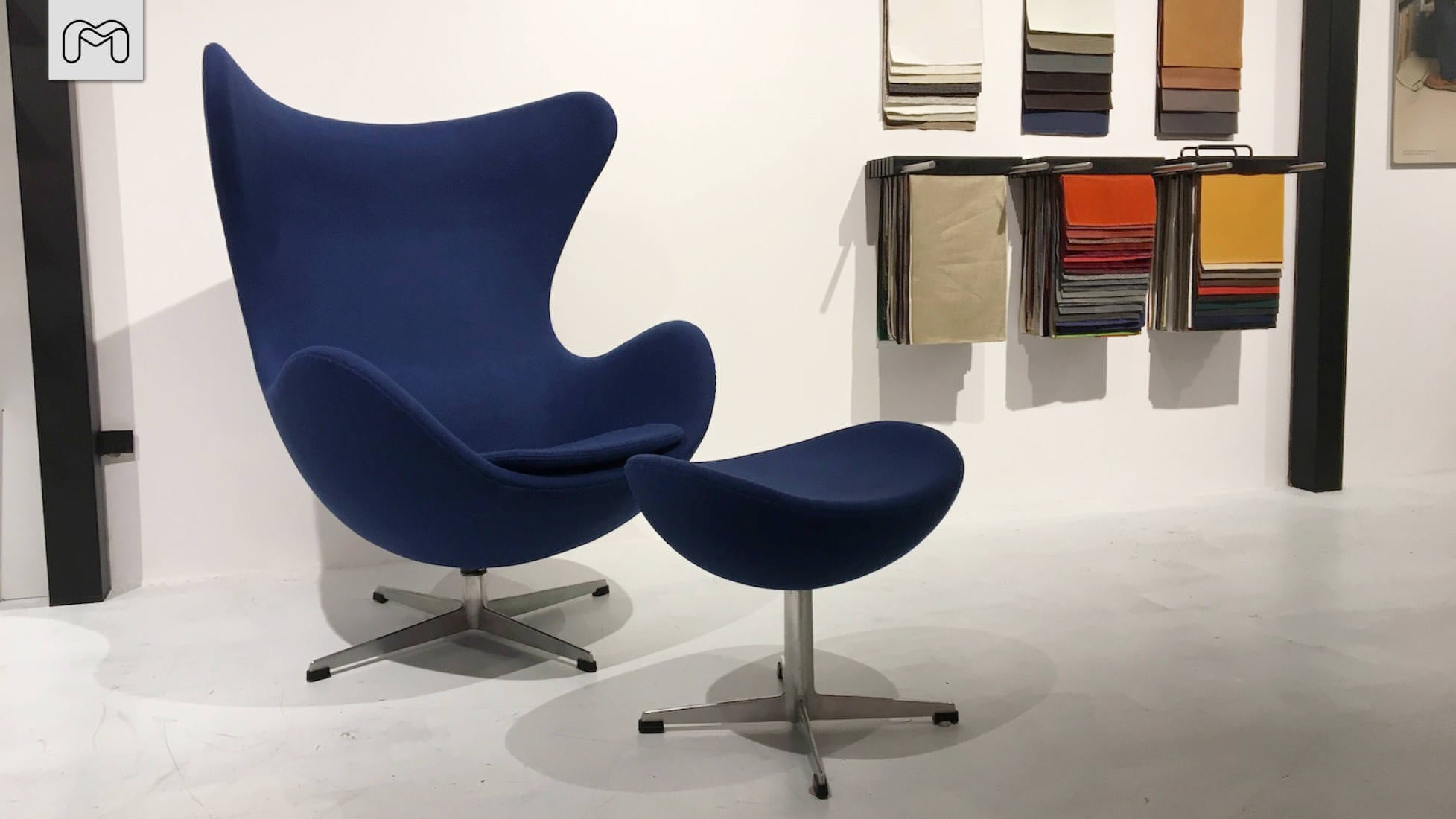That ‘the Ant’ and ‘No 3107’ are known as ‘most copied chairs’ explains the popularity of sympathetic looks. A little higher up the cultural ladder, the London Design Museum put the ‘Egg’ and ‘Swan’ armchairs in the top ‘12 Chairs That Marked International Furniture’.
History
Architect and designer Arne Jacobsen (1902-1971) was at the top of his profession when he designed the Egg and Swan armchairs for the lobby of the SAS hotel in Copenhagen (now Radisson Blu Royal Hotel). In 1960, Jacobsen situated this ultra-modern green-glass block of 22-storey mids in the brick heart of the Danish capital. While the cleanliness of the architecture did not please everyone, most visitors warmed to the modern-yet distinctly Danish interior.
Jacobsen used a lot of wood in the lobby's panelling. Against the straightforwardness of the architecture, he used the round shapes of the Swan and the Egg to delineate private seating areas. Carpets, cutlery, curtains, ashtrays, signage, wine glasses and the furniture; Jacobsen designed everything at the SAS, which has therefore been dubbed the "world's first design hotel
Design value
The double curve is a special feature of chairs by Arne Jacobsen. Inspired by Eames' DCW, he translated the shell of curved plywood into dining chairs 'Ant' (1952) and 'Series 7' (1955), produced by Fritz Hansen.
He later continued the same contour to design the upholstered armchairs Swan and Egg for the interior of the SAS hotel. Both models start from the same idea: to capture modern comfort in one flowing form, without straight lines or corners.
A seat shell made of polytherane foam forms the base over which the upholstery of the Swan and the Egg was drawn. Leather gives the most beautiful expression to the taut contour, but is also the most difficult to work with. So a lot of specialised handwork with a taboo on seams. Upholstering an Egg required two hides; front and back.
Early models had no cushion and there were only visible seams in the seat. A vintage 'Egg' in cognac or black leather, is still the most expensive to buy; around €8,000 on 1stDibs.
How vintage?
These days, you can buy a knock-off for as little as €250; a Chinese imitation, while a new Jacobsen by Fritz Hansen costs between €3100 (Swan) and €5100 (Egg). That higher price range made copying profitable for Italian manufacturers back in the 1980s. Fritz Hansen responded with increasingly sophisticated identifications at the bottom of the seat. After silver foil stickers ('made in denmark', serial number and Fritz Hansen) in the 1960s and 1970s, neat aluminium plates with logo and year of production followed in the 1980s.
Later this was replaced by casting 'Fritz Hansen' into the aluminium along with it. The first models are often the most interesting for collectors and the most expensive in the trade. Between 1963-'67, serial numbers are missing and there are
other clues to determine age and authenticity. An old Fritz Hansen; Swan or Egg stands on a cross base with four legs and a cross-shaped base of brushed aluminium, in one piece. Elegance explains everything at Jacobsen: so five or six feet are fakes and so is a clunky tube.
However
In an 'egg' from the 1980s, a thicker two-piece tube hides a mechanism that allows the chair, operated by a lever on the side, to tilt. That lever must be crooked, otherwise you probably have a fake!
Text: Toon Lauwen, WOTH. Read the original article here.






















